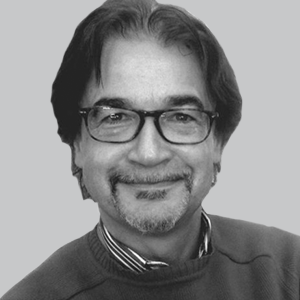Improving Sleep Diagnostics By Revolutionizing Sleep Monitoring
Onera’s co-founder and chief medical officer, and the associate professor at John’s Hopkins University spoke about the plans for recently raised Series A funding and how a newly developed patch system could alter the diagnostics of sleep medicine.
Hartmut Schneider, MD, PhD, co-founder and chief medical officer, Onera, associate professor, Johns Hopkins University

Hartmut Schneider, MD, PhD
Recently, Onera Health, a sleep diagnostics company, announced that it had raised $9.3 million in Series A funding with which it plans to attempt to revolutionize the diagnostics of sleep care with a first-ever at-home diagnostic patch.1
This funding came from a number of investors, including Jazz Pharmaceuticals and imec.xpand, among others. Jed Black, MD, senior vice president, sleep and CNS medicine, Jazz, and adjunct professor, Stanford Center for Sleep Sciences and Medicine, expressed his belief in a statement that Onera could transform the diagnostic and treatment-monitoring processes with these developing hardware and software innovations. Onera is planning to develop a pair of simple patches to monitor sleep diagnostics in a way much more convenient to the multiple sensors which are in use now.
To find out more about the plans for this funding and what the Silicon Valley-based company’s goals are, NeurologyLive® spoke with Hartmut Schneider, MD, PhD, the company’s co-founder and chief medical officer, as well as an associate professor at John’s Hopkins University.
NeurologyLive®: What’s the biggest challenge you’re seeking to tackle in sleep medicine?
Harmut Schneider, MD, PhD: In terms of being able to monitor the effect of the treatment, there’s nothing available in the neurology or psychiatric space that can do that. The principal of administering treatment or monitoring the efficacy or effectiveness of treatment has been developed for sleep apnea, but in neurology, where most diseases will affect the sleep architecture, the medical treatment that is being instituted can be measured by a restoration of the disturbed sleep architecture into a normal one. By that, you can actually have a monitor of the efficacy of established medical treatment for neurological and psychiatric treatment.
I’ll give you an example. When you have a psychiatric disease, almost all the disease goes along with massive disturbances of the sleep architecture. then giving a drug like an antidepressant or antipsychotic drug will restore base sleep architecture as one goal of the treatment. And just the fact that we have now an EEG-based monitoring system will allow the neurologist and psychologist to use that tool for treatment control.
In the end, it’s just what has been developed for sleep apnea. We are now transforming it and giving the same tools to the neurologists, which they have never had before. The sleep field had been actually opened by neurology and psychiatry, but then it has been dominated for 20 years by the pulmonologist for sleep apnea. Now, we’re learning the lessons from that medical field to translate it to neurology and psychiatry, and not just neurologists and psychology, but other areas of medicine where they manage the patient, whether it’s the hospital when you have to deal with acute neurological psychiatric diseases, or perhaps the outpatient clinic or nursing facilities where people with neurological disease or dementia and other problems, all of which affect sleep or that you can lose sleep to monitor the body function, to improve the body functions essentially.
What’s the potential impact of making comprehensive sleep care a reality?
Primarily, in practice, what I believe is currently a problem is that doctors, in general, do not ask the question: Is sleep good for the condition of my patient or is sleep a stressor or abnormal for the condition of my patient? The doctors don’t ask that question because they don’t have the tools at hand to answer the question. Now, if we have our tool provided to all the doctors who, finally, can simply ask that question and answer that question at the same time, they can identify that sleep is probably affected in half of the patients with a chronic disease. It is not unloading the patients, it is actually loading or stressing the patient and leading to progression of the underlying disease. Now, the overall impact is that in these patients—if you can identify the stress—then you might relieve the stress in the night for a majority of the patients, which can result not only in a marked improvement in the sleep structure and quality of life, but also in the disease progression.
This is particularly true for researchers in that area. It is clear now clear that dementia, attention deficit disorder, and PTSD are some of the examples of diseases that are affected by sleep, and if researchers want to examine the relationship between Alzheimer, dementia, or sleep, they should contact us because we can provide them with the tools for 200, if not thousands, of patients for a research study.
Anything to add?
I think the physician community should know that sleep is no longer an obscure field that they don’t have access to. That soon, they will have the tools at hand to practice and to do the most necessary things, knowing their patients not just during the day, but also what occurs during the night.
REFERENCES
1. Onera Health raised $9.3M+ in Series A funding to revolutionize sleep diagnostics [press release]. Palo Alto, CA: Onera Health, Inc; Published April 24, 2019. onerahealthinc.createsend1.com/t/ViewEmail/t/EEC12D593A37274D2540EF23F30FEDED. Accessed April 28, 2019.